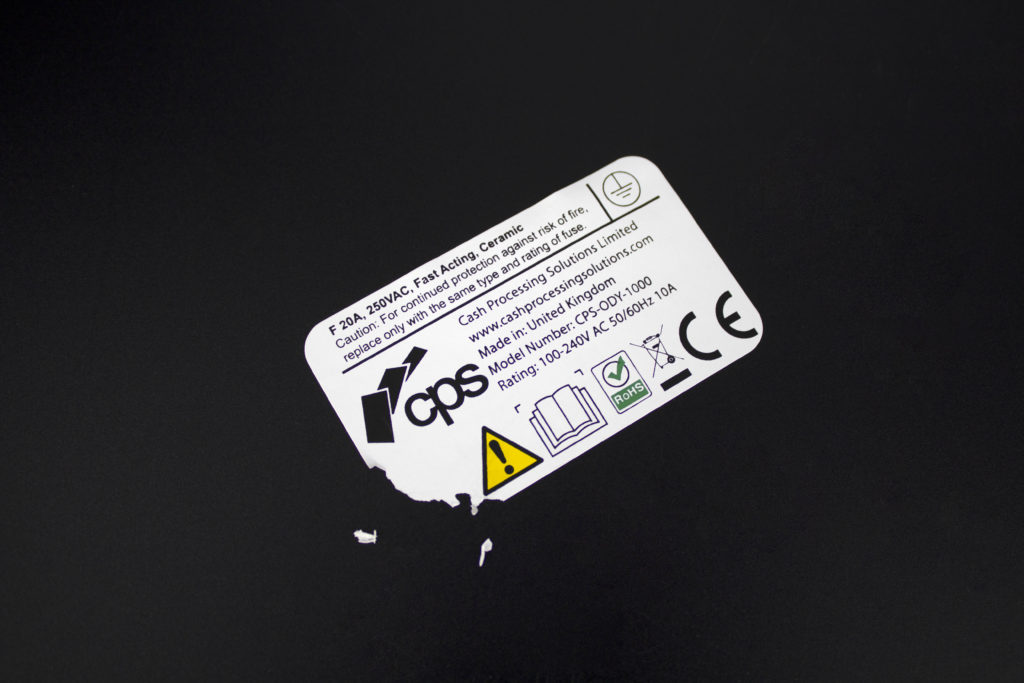
Hands off my label
Guides
Labels might be used for a wide variety of purposes, which is why we offer a range of different products to suit many commercial needs across a wealth of industries.
Some might be used to inform or educate their audiences, while others might be to persuade or influence a buyer. On the other hand, labels can also be used to make it very clear to the reader to stay well away from whatever the label is applied to – be it a piece of dangerous machinery or perhaps some research equipment that is currently gathering data and mustn’t be tampered with.
Tamper-proof labels
While the content of the label itself can make this message very clear, investing in tamper-proof labels can also ensure that should somebody choose to ignore this message, it will not be possible for them to remove the information.
Labels can be made to be permanent, temporary, tamper-proof and high tack– perfect for applications for which durability is key. These include warning instructions, product tracking and component identification.
With properties including resistance to scuffing, moisture, abrasion, alcohol, extreme temperatures and UV, you can rest assured that these labels won’t go anywhere in a hurry.
Tamper-evident labels
Similarly, you may want tamper evident labels, whose job it is to make it very clear when an individual has tried to remove or break the label. Our tamper-evident products are ‘pick-resistant’, meaning they will fragment if any prying hands try to mess with them. Made from ultra destructible vinyl with pressure sensitive acrylic adhesive, the material is perfect for such an application.
A friendly label may pay off
But how can you ensure that whoever reads your label does as you say?
In certain cases, it as absolutely imperative that people do not mess with the device or surface onto which a label is applied. For example, when scientists are carrying out research in the field, they may need to leave state-of-the-art equipment unsecured in the open for a significant period of time.
Therefore, researchers from the Max Planck Institute for Ornithology in Seewiesen, Germany conducted an experiment – using labels – to see exactly what put off ‘tamperers’ from messing with equipment they shouldn’t be fiddling with.
Focusing on the content and tone of the labels, they used 60 equipment dummies distributed in four public parks in Munich. Some had friendly, personal labels (for example, saying the device was being used for a student’s project), while others presented either neutral or threatening messages.
The results – published in the British Ecological Society journal Methods in Ecology and Evolution – showed that while most of the dummies were thankfully left undisturbed, the ones that contained a friendly label were messed with 40 per cent less than those with neutral or threatening ones.
“Apparently, the friendly label effectively reduced anybody’s interference with our equipment, regardless of whether they intended to damage or steal the equipment or just wanted to pick it up for closer inspection,” concluded project leader Holger Goerlitz.
“Although our friendly labels were not able to influence what exactly was going to happen with the equipment, it nevertheless could minimise the number of incidences,” confirming its vital companies give as much thought to the tone and message of their labels as they do to the material and style of them.
Visit our Self Adhesive Labels or Roll to Roll pages for more information.
Let's discuss your project.
Whether you have a full brief or just an idea, we'd love to share our expertise with you.
Contact us“I just wanted to thank you on your service because it was truly outstanding, to the point that one of your guys actually help me jigsaw the letters into the...”
“We have been working with the wonderful team at Fine Cut and the service is always outstanding. The account handlers will go above and beyond to help with...”
“The caps arrived and look fantastic. Many thanks again for sorting them out so quickly, much appreciated.”
“I’d like to thank you for getting these labels to us so quickly. The labels are perfect too, very happy.”
